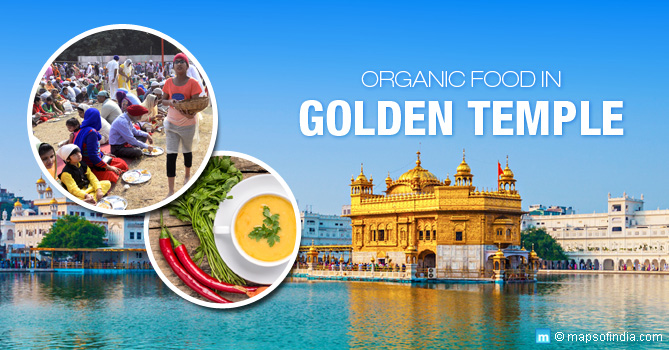It’s a place where “religion, caste, and social status are obliterated” and no one goes hungry. The Golden Temple in Amritsar – the holiest shrine of the Sikhs – has taught quite a few important lessons on harmonious co-existence and the importance of openness towards people from different religions.
Sri Harmandir Sahib (The abode of God), which was built as a place of worship for people from all walks of life and religions “to come and worship God equally”, has also inspired billions to give oneself to serving community. The temple not only exudes the belief in universalism of the Sikh community, but also leads others to humility, honesty and hard work.
World’s Largest Community Kitchen to Serve Organic Food
Guru Ramdas Langar Hall at Sri Harmandir Sahib, which is perhaps the world’s largest community kitchen, has taken a landmark decision of serving organic food to the pilgrims who visit the temple every day. It’s a major stride towards encouraging production of chemical-free food across India. However, the task of serving organic meals is easier said than done.
How would the Gurdwara arrange supply of organic raw materials? Fruits, grains and vegetables like carrot, cauliflower, radish, spinach and methi (fenugreek) are being grown at Gurdwara Gurusar Satlani Sahib near Amritsar and few farms in Patiala. The Golden Temple has already started receiving 10 quintals of organic produce every 1-2 days, but that doesn’t fulfil the requirement.
The idea of organic langar was sown in late 2014 when the seven-acre land attached to the Gurdwara Gurusar Satlani Sahib was identified for cultivating. Ever since then, Shiromani Gurdwara Parbandhak Committee (SGPC) has been trying to increase the volume of organic produce by implementing the programme at gurdwaras that have land to grow organic food. According to Dr. Rajwant Singh, founder and president of EcoSikh, an NGO trying to inspire farmers to focus on producing food through organic means, around 25,000-30,000 gurdwaras in Punjab are likely to be motivated by this decision and start following suit.
You realise that it’s not a half-hearted approach when you come to know that summer vegetables have already been sown and the SGPC is continuously seeking expert advice from Punjab Agro Industries Corporation Limited to sustain and scale up the process.
Daily Arrangement in Golden Temple
- You can understand the scale of arrangement at Sri Harmandir Sahib from the fact that its community kitchen serves food to 100,000 people every day.
- During weekends and special occasions, the number of people visiting the langar doubles up.
- On an average, 7,000 kg of wheat flour, 1,300 kg of lentils, 1,200 kg of rice and 500 kg of ghee is used to prepare the meal every day.
- The community kitchen in Golden Temple uses approximately 100 LPG cylinders and 5,000 kg of firewood every day. The electronic bread makers used in the kitchen can prepare 25,000 rotis in just one hour.
- The entire operation is run by 450 in-house staff and hundreds of other volunteers.
Unwavering Commitment to Community Service
By embracing the idea of growing organic food and reducing the impact of pesticide, the administrative team at Golden Temple has yet again set an example for others to follow. It has been at the forefront of doing altruistic service. In the past, it had gone beyond the call of the duty and reached out to people in distress. Even if you don’t recall its contribution towards feeding Kashmiris during the flood in 2014, you may remember its spontaneous efforts in sending 100,000 food packets to the earthquake-affected people of Nepal last year.
Related Information :
Jallianwala Bagh Massacre: Story, History, Facts, Why it Happened





